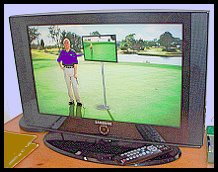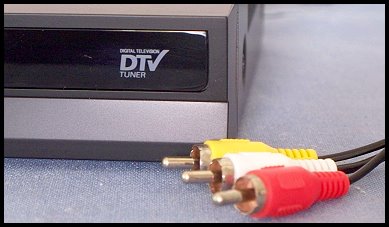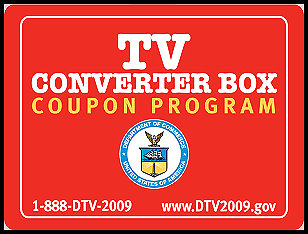 | |||






 | |||
|
WELCOME TO THE ESSAY ARCHIVES!
<< Part I
(June/July)
<< June
<< June
<< June
<< Part I
(June/July)
* * *
|
"I Hooked Up Last Night - End of Story?" "Heralded as the most important innovation in the history of the industry, digital TV involves the reconfiguration of a sector that, beyond its economic significance, is central to the mechanisms of democratic politics and the evolution of popular culture . . . In a sense, the transition to digital TV is about a revolution long overdue . . . Digital technologies have revolutionized the telecommunications industry, the information services industry, and to a large extent the film industry. But until recently, the use of analog equipment in the transmission and reception of video programming has precluded broadcasters from taking full advantage of fundamental innovations in information processing and distribution . . . The forces that challenge the broadcasting industry, however, are not only technological. The transition to digital TV is part of a larger process of change in the way information is produced, aggregated, and distributed in contemporary societies . . . It is a story about large-scale changes in the normative models as well as the institutions that shape television as an economic and social force -- and, ultimately, about the politics of the information society."(n1). From Hernan Galperin, New Television, Old Politics
As the quote above indicates, this process of change, though long in the making, is part of broader changes taking place in the way information is developed, collected and delivered here in the U.S. and around the world. The issue of the transition to digital television was first covered on the site in September 2005 and June 2006. Both of those essays, which include descriptions of the differences between analog and digital television and a bit of history on the transition, can be found in the Essay Archives section of the site. While the issue is not of great immediate concern to the majority of household in the U.S. receiving broadcasts via either cable or satellite, it is of concern to the households relying on OTA broadcasts for viewing television programs. In some ways the morning of June 13 will be about expectations and assumptions -- whether they are met by those receiving OTA broadcasts and using digital converter boxes, and how well they are met. To those unfamiliar with the issue, a bit of an explanation. When the government mandated the switch to digital television, a program was established to provide coupons for the purchase of digital converter boxes for U.S. households either unwilling or unable to purchase new television sets or subscribe to cable/satellite services. Two coupons are available per household, with each coupon worth $40 toward the purchase of a converter box for use with analog television sets (approved models of converter boxes retail for about $50 - $60 on average). Part of the reason that the deadline for the full transition to digital TV was changed from February to June of this year was the backlog in orders for coupons and the fact that the funding for the program nearly had been depleted. The number of households requesting coupons is not insignificant. According to statistics which can be found via the websites listed in the links and footnotes sections, as of June 3, over 32 million households had requested some 59 million coupons (indicating that a majority of households participating in the program were requesting two coupons). (n2) Not all of those coupons have been redeemed. About 30 million of the 58 million coupons sent have been redeemed to date, a redemption rate of about 55%. (n3) California leads the states in the total number of coupons requested with about 6.1 million, followed by Texas with 5.9 million requests and Illinois and Florida, each with about 3 million requests. In the Los Angeles area alone, the number of households with approved coupon requests (as of December 31, 2008) was over 780,000. (n4)
How close were early estimates of the numbers of viewers and/or households in the U.S. relying either totally or partially on OTA broadcasts to the actual number of households requesting coupons? It's difficult to say. However, according to U.S. Government Accounting Office (GAO) statistics released in 2005 when the program was being formulated:
Even if each of the 21 million households cited above as relying exclusively on OTA transmissions had requested the maximum two coupons, that would still mean that requests -- approximately 17 million to date -- have been coming from households receiving cable, satellite, or other broadcast services as well. What exactly this means, if anything, for the way Americans view television will probably be known better after the transition is fully in effect. Resources for the Transition and Afterwards If you would like further details on what to expect from the switch to digital television, need assistance hooking up a converter box, or would like more general information, the following websites may be of interest to you:
Finally, two interesting sites from the Federal Communications Commission offer mapping of digital television reception, both on a local and national scale:
The Morning After Most sites advise anyone using a converter box to re-scan for stations on the 13th after the transition has taken place. If you or someone you know wakes up and decides, after all, that a converter box is necessary, it's still not too late to order coupons. Requests for the $40 coupons will be accepted through July 31, 2009, or while supplies last. You can click the image below to go directly to the DTV 2009 website, and you can also call 1-888-DTV-2009. * * * Thank you for visiting the "Essays" page this month. Please check back after the Fourth of July weekend for further information on the 2009 essay series. FOOTNOTES: The following are footnotes for sources cited in the June 2009 essay. Click on the asterisk at the end of the sentence to return to the text of the paragraph including the footnote: n1 - Galperin, Hernan. New Television, Old Politics: The Transition to Digital TV in the United States and Britain, Cambridge: Cambridge University Press, 2004, pp. 3 - 4 (*) n2 - "DTV Converter Box Coupon Program Weekly Status Update," viewed June 5, 2009, at www.dtv2009.gov/stats.aspx. (*) n4 - "Coupons Requested by State," National Telecommunications and Information Administration, viewed June 5, 2009 at www.ntiadtv.gov/coupon_stats.cfm, and "Over the Air Household Participation Rates by Designated Market Area (DMA) as of December 31, 2008," National Telecommunications and Information Administration, viewed June 5, 2009, at www.ntia.doc.gov/dtvcoupon/DTV_OTAHH_Participation_081231.pdf. (*) n5 - Statement of Mark L. Goldstein in "The Role of Technology in Achieving a Hard Deadline for the DTV Transition," hearing before the Subcommittee on Telecommunications and the Internet, Committee on Energy and Commerce, U.S. House of Representatives, 109th Congress, 1st Session, February 17, 2005, Serial No. 109-9, Washington, D.C.: U.S. Government Printing Office, 2005, pp. 18 - 19. (*)
To return to the top of the page, click here. To return to the essay archives, click here. Follow www.dorothyswebsite.org on TWITTER! Home | Poetry |
Essays | Free Concerts | Links | 2010 Extras |
About the Site |
||
 | |||
|
www.dorothyswebsite.org © 2003 - 2010 Dorothy A. Birsic. All rights reserved. Comments? Questions? Send an e-mail to: information@dorothyswebsite.org | |||







